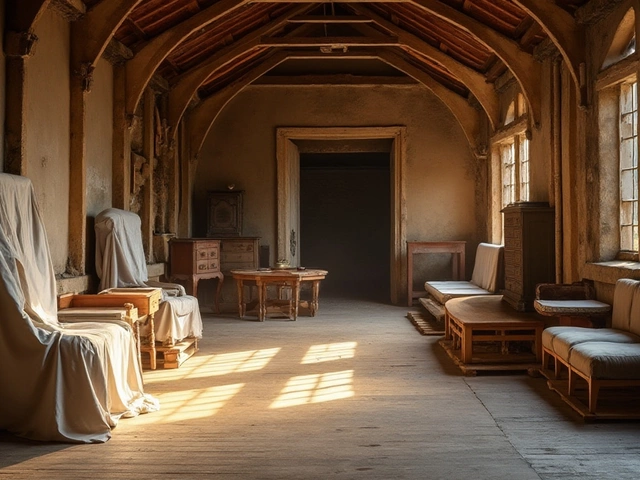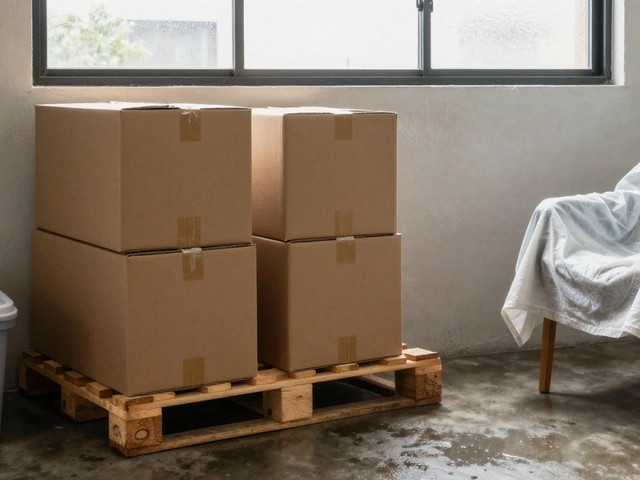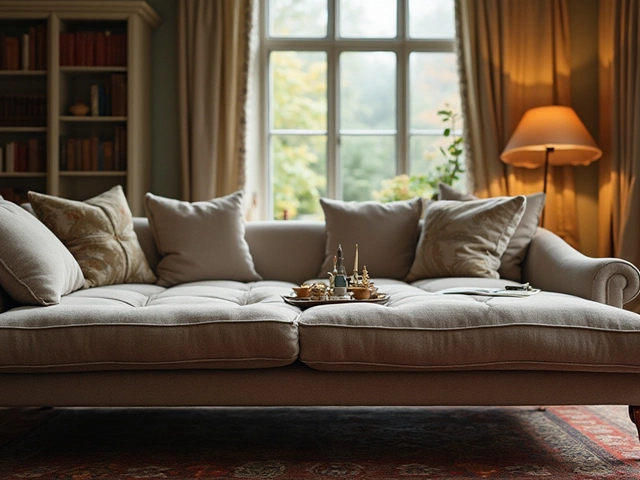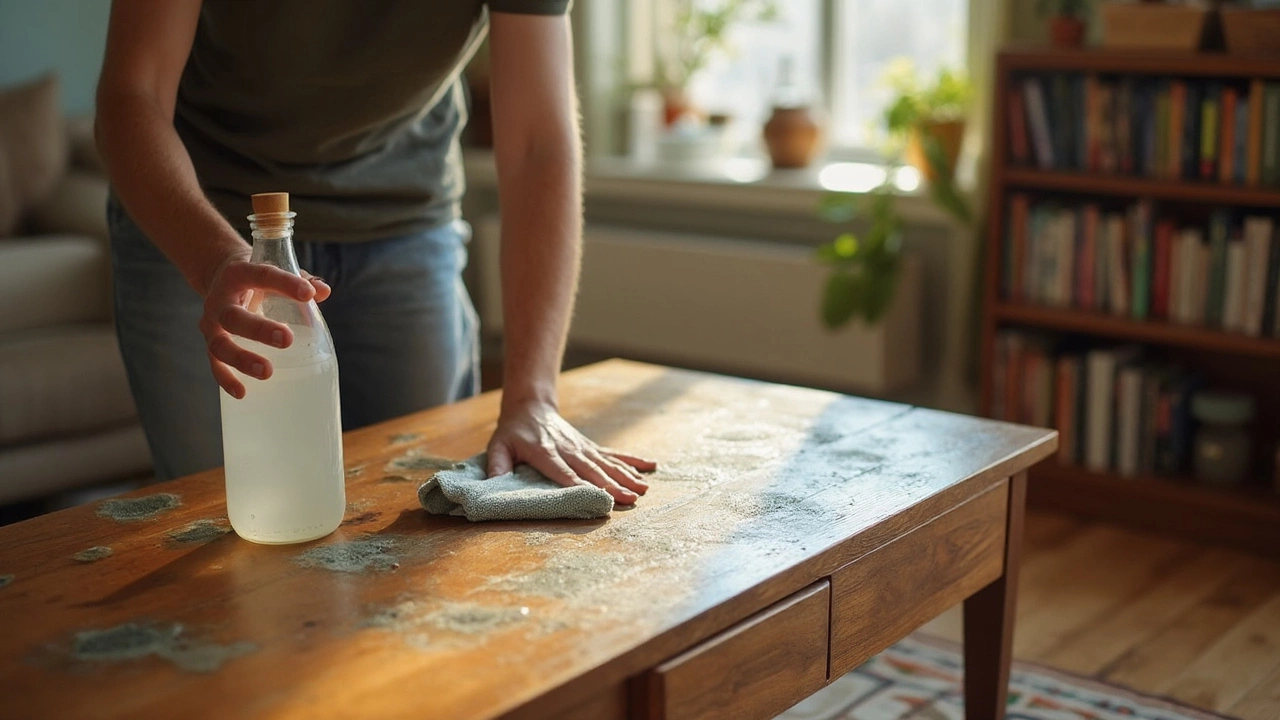 14
May,2025
14
May,2025
If you pull out a chair from the back of the garage and spot fuzzy splotches on the wood, you’re not the only one. Mold loves to grow on wood furniture, especially if it’s been in a damp basement or tucked away in a stuffy storage unit. And if you’ve heard vinegar is the magic answer, you’re half-right. Vinegar can actually kill a good chunk of common household molds—some studies say up to 80%—but it isn’t a miracle cure for every situation.
What vinegar does best is break down mold’s structure, making it easier to wipe away. It’s cheap, it’s natural, and it doesn’t leave strong chemical smells. But, it’s not perfect: vinegar can only penetrate so deep, and if mold has rooted itself way inside the wood, you might need something stronger. Plus, vinegar doesn’t clean up the stains leftover, so your oak table might still look haunted if you don’t finish the job right.
Here's the truth: cleaning mold is less about finding a miracle liquid and more about using the right process—think good airflow, the right wipes, and a bit of patience. If you’re hoping to save your favorite bookshelf or your grandma’s old dresser, knowing how and when to use vinegar can actually make a difference. Ready to get practical? Let’s talk about why your storage furniture gets moldy in the first place, and what you can actually do about it.
- Why Mold Loves Wood Furniture
- The Science Behind Vinegar and Mold
- How to Safely Use Vinegar for Mold Removal
- When Vinegar Isn’t Enough
- Keeping Mold Away for Good
Why Mold Loves Wood Furniture
Mold fans out across wood for a reason—it’s like an all-you-can-eat buffet for these tiny invaders. Most wood furniture holds on to moisture, especially if your home is a bit damp or humid. Mold spores are everywhere, just waiting for the perfect spot to land. When they find cozy, damp wood, they dig in and start spreading fast.
The grain and natural pores in wood create little hiding spots where moisture can get trapped. Unlike plastic or metal, wood pretty much drinks up water if the air is wet enough. Closed-up storage spaces and basements are famous for this, and that’s usually where you stash your wood furniture when you’re not using it.
| Condition | Mold Growth Risk |
|---|---|
| Humidity above 60% | High |
| Poor ventilation | High |
| Leaky basement or roof | Very High |
| Sunlight exposure | Low |
Take a look at those numbers. Mold barely bothers to show up if the air is dry and there’s sunlight. But in dark, musty corners? It’s party time for mold. If you’ve ever noticed a musty smell on your furniture after the rainy season, you already know how sensitive wood is to even small changes in dampness.
- Wood is porous and traps moisture easily.
- High humidity (over 60%) can set off mold growth in less than 48 hours.
- Mold spores are invisible—just because you can’t see them doesn’t mean they’re not there.
- Pieces stored in unventilated areas are hit the hardest.
If you want to avoid mold headaches, try to keep your furniture in drier, well-aired spots, and maybe sneak in a dehumidifier if your place is often damp. These small changes seriously cut down the chances of mold clinging to your favorite table or bookshelf.
The Science Behind Vinegar and Mold
So, what’s really going on when you splash vinegar on moldy wood furniture? Let’s break it down. Household vinegar is basically a mix of water and acetic acid, usually about 5% acetic acid, which gives it that strong, tangy smell. Mold, on the other hand, is made up of tiny living spores that love moisture and organic material, like your favorite old bookshelf.
The magic of vinegar comes from its acidity. The acetic acid can actually bust up the cell structure of most types of mold. When the acid hits those mold spores, it tears through their membranes and disrupts their growth so they can't spread as easily. Here’s the deal: not all mold types are created equal, and some are tougher than others. Still, research from the Journal of Environmental Health Sciences found that vinegar wiped out around 82% of common mold species found in homes. Not bad for something you probably already have in your pantry.
| Mold Removal Method | Effectiveness (%) |
|---|---|
| White Vinegar | 82 |
| Bleach | 88 |
| Soap & Water | 50 |
But don’t be fooled: vinegar doesn’t always go deep enough for mold that’s started to soak into the wood. The acid method works best on the surface, where you can scrub the mold away. Once the mold gets down into cracks or inside the material, vinegar has a hard time reaching those spots. It’s also worth noting that while vinegar kills mold, it doesn’t bleach out dark stains left behind. So, the vinegar trick is a solid start, but not a perfect fix for every situation.
In short, vinegar is handy and effective for most everyday mold cleanups on wood furniture. Just remember there are other options out there—and sometimes you need to bring in the big guns if the mold problem is out of control.
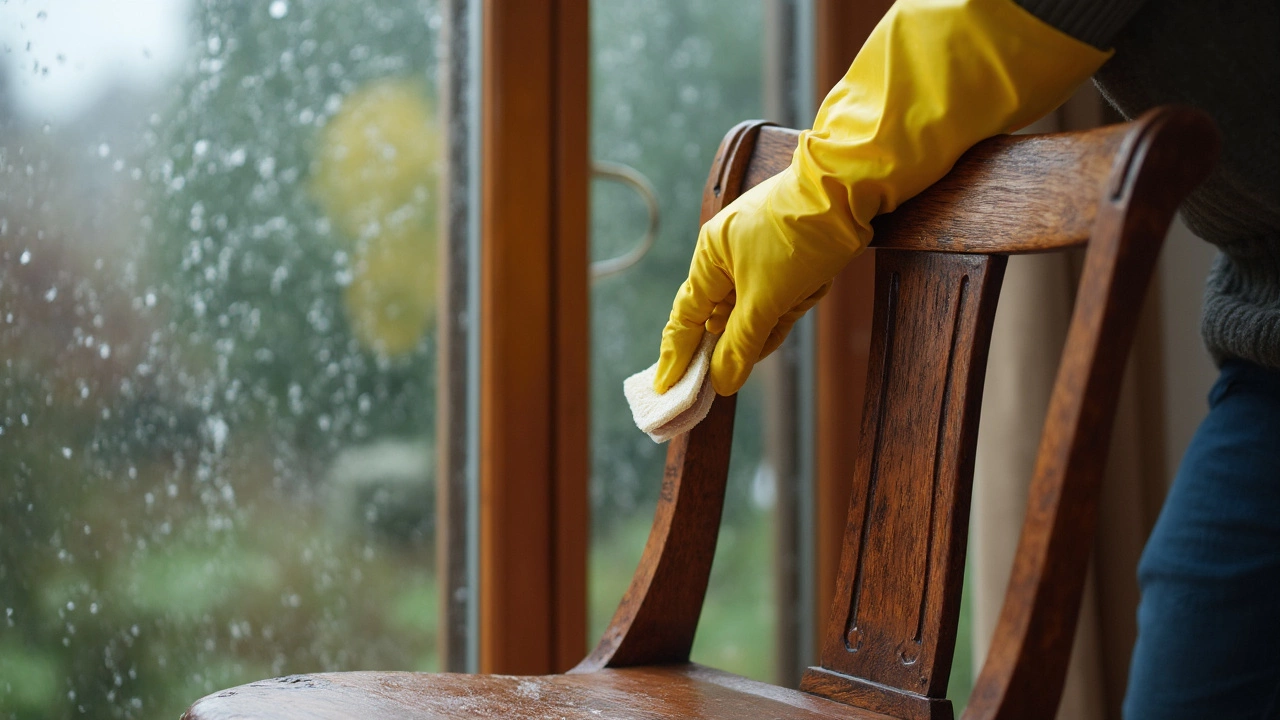
How to Safely Use Vinegar for Mold Removal
First things first: make sure you’re wearing gloves and maybe even a face mask. Mold spores are tiny troublemakers and you don’t want to breathe them in or get them on your skin. Open some windows or set up a fan for good airflow—this makes the job safer and helps dry the wood after cleaning.
You'll want to use plain white vinegar. No fancy blends or cleaning vinegars—just the basic stuff from the grocery store, usually around 5% acetic acid.
- Test a small spot on your wood. Dab a little vinegar on an out-of-the-way area. Wait an hour to make sure it won’t mess with the finish or color. Wood can react differently depending on what it’s made of and how it’s sealed.
- Pour vinegar straight (don’t water it down) into a spray bottle. Spray the moldy areas until they’re damp but not soaked. Avoid flooding the wood as too much liquid can cause swelling or damage.
- Let it sit for at least 60 minutes. Don’t rush it—vinegar needs time to break down the mold cells.
- Wipe the area clean with a disposable cloth or paper towels. Toss these outside immediately. Mold can cling to cleaning cloths and show up elsewhere if you’re not careful.
- If stubborn stains stick around, scrub gently with a soft-bristle brush. Don’t go wild or you’ll scratch the wood. For big or deep-rooted problems, you might need a repeat go.
- Dry the furniture thoroughly. Use fans or leave it in a well-ventilated room. Moisture just invites mold back again.
Check out this quick comparison on common mold cleaners versus vinegar:
| Cleaner | Kills Mold? | Removes Stains? | Toxicity |
|---|---|---|---|
| White Vinegar | Yes (about 80%) | No | Low |
| Bleach | Mostly on hard surfaces | Yes | High |
| Baking Soda | Somewhat | No | Low |
| Commercial Mold Cleaner | Yes | Yes | Medium to High |
The real key is patience: vinegar works, but only if you give it enough time and don’t let the wood stay too wet. And if you notice the mold popping up again in a few days, it’s a sign there’s probably too much moisture in your storage area. Fixing leaks or running a dehumidifier does more for prevention than any cleaner.
When Vinegar Isn’t Enough
Sometimes, mold just laughs at your vinegar spray. If the vinegar has no effect, or you keep seeing the same black or green patches coming back, you’ve got a deeper problem. Mold spores can dig their way in, especially with porous woods like pine or oak, making home remedies less effective.
Here’s what’s going on: vinegar only works on the surface. Mold that’s rooted deep inside wooden furniture is out of reach for most household cleaners. And some mold types, like Stachybotrys (aka black mold), barely get fazed by vinegar at all. At this point, you need a stronger plan.
| Solution | When to Use | Risks |
|---|---|---|
| Hydrogen Peroxide (3%) | For medium mold issues on finished woods | May discolor wood slightly |
| Borax | Persistent or repeat mold on unfinished or painted wood | Leaves powder residue if not wiped well |
| Commercial Mold Cleaner | Large, stubborn, deep-seated mold spots | Strong chemicals—protect skin and eyes |
| Professional Mold Remediation | Mold covering >10 sq. ft. or keeps returning | Costs $500-$2000 on average |
If you can still smell that earthy, musty odor even after scrubbing, the problem might be deep inside the furniture, not just on the surface. Mold that’s soaked into glued joints or veneers is almost impossible to treat at home.
Here’s a step-by-step on what to do if vinegar fails:
- Wear gloves and a mask—no one enjoys breathing mold spores.
- Grab hydrogen peroxide (3%) and pour it into a spray bottle. Spray affected spots, let it bubble for 10 minutes, and wipe clean.
- If the problem comes back, try a borax solution: mix 1 tablespoon in a cup of water. Scrub, then wipe with a damp cloth.
- Still not working? Commercial mold removers do the trick, but open windows for airflow.
- If you find more mold inside drawers, behind panels, or it keeps spreading, it’s time for a pro. No shame—pros have tools that zap deep, hidden mold and keep your family safe.
Quick tip: if furniture starts falling apart, or you spot soft, rotten areas, it’s probably not worth saving. Mold ruins structural integrity, and anything that smells like a lost forest after cleaning is better off replaced. Don’t risk your health for a moldy old cabinet—sometimes walking away is the smart move.
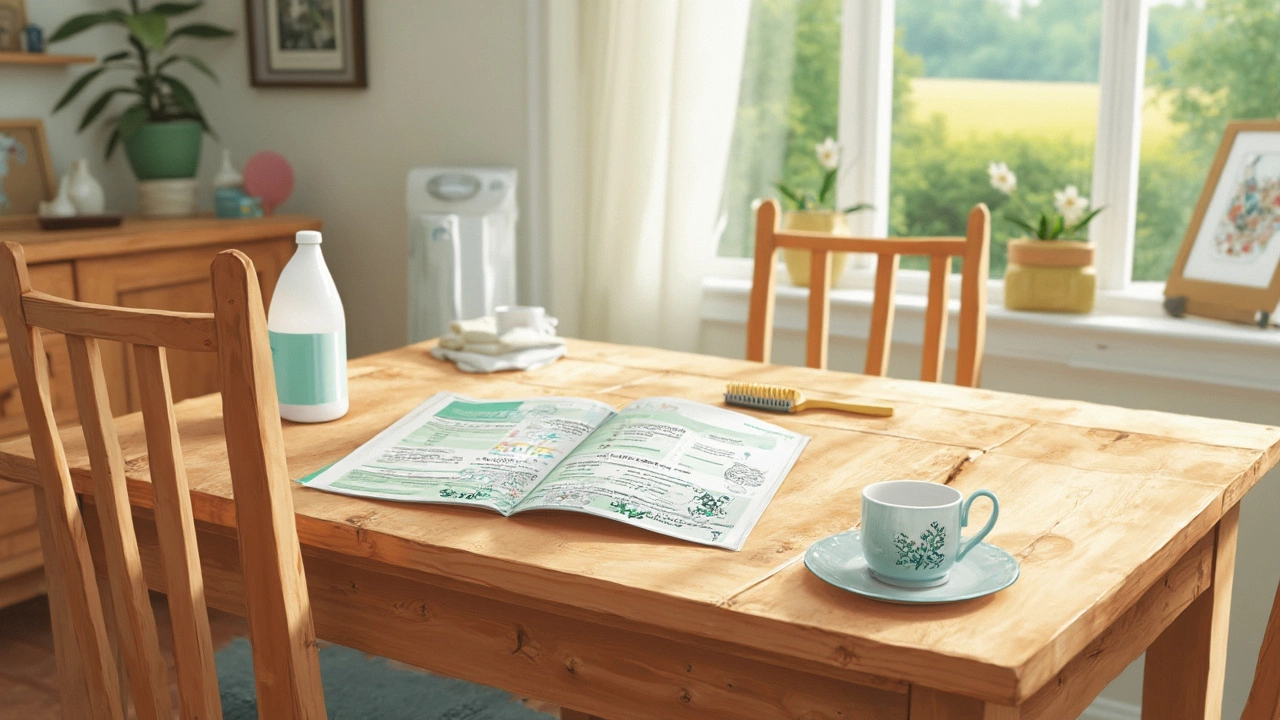
Keeping Mold Away for Good
Once you’ve kicked mold off your wood furniture, you really don’t want it creeping back. Mold spores are stubborn and float in the air, landing whenever there’s enough moisture to get started again. So, the real trick isn’t just getting rid of it—it’s making sure the conditions never get cozy enough for it to settle in again.
First up: watch the humidity. Mold loves any space where the humidity lingers above 60%. A cheap digital hygrometer can help you keep track. If your space feels muggy or you notice windows fogging up, it’s time for a dehumidifier or at least a box fan to keep air moving. Airflow is your best friend here, especially if your furniture sits against a wall or in a basement.
- Keep your wood furniture dry. Wipe it down right away if you ever spill anything or if it gets damp.
- Place furniture away from exterior walls or corners, where condensation builds up fast.
- Open windows regularly or run a fan, even during cooler months, to keep fresh air moving.
- If you store stuff long-term or in the garage, use moisture absorbers like silica gel packs. Even some kitchen salt in a dish can grab excess dampness.
It might sound like a hassle, but a quick five-minute check once a week goes a long way. If you spot a musty smell, that’s a warning sign—even if you can’t see mold yet. Don’t just spray air freshener. Track down the moisture and fix it for good.
Here are some stats that really hit home:
| Risk Factor | Mold Growth Probability |
|---|---|
| Humidity above 70% | High (over 70% chance in 24-48 hours) |
| Poor Airflow | Moderate to High |
| Direct Sunlight Exposure | Low (sunlight dries furniture quickly) |
| Regular Cleaning | Very Low |
Remember, the best defense is a one-two punch: keep things dry and have proper ventilation. Do this and your wood furniture will stay fresh, stink-free, and way safer to use for years—no hidden fuzzies to worry about.
